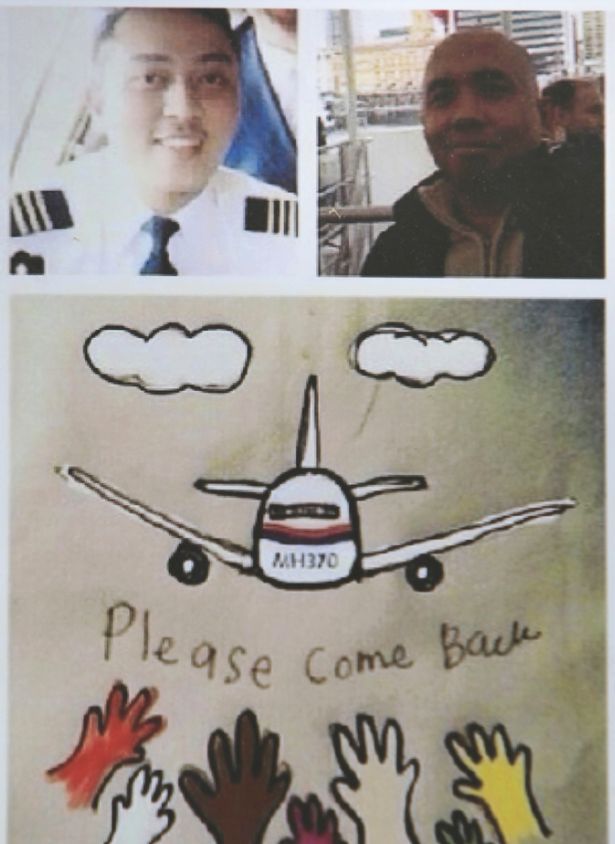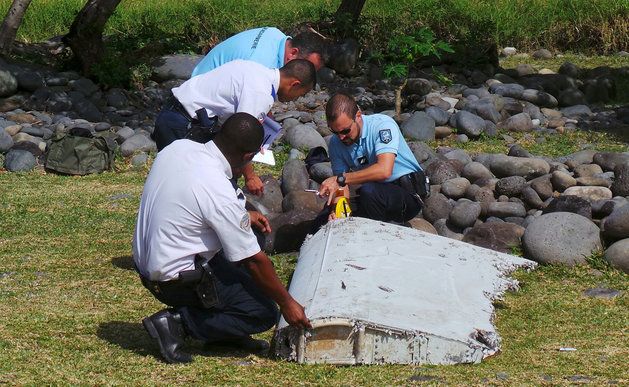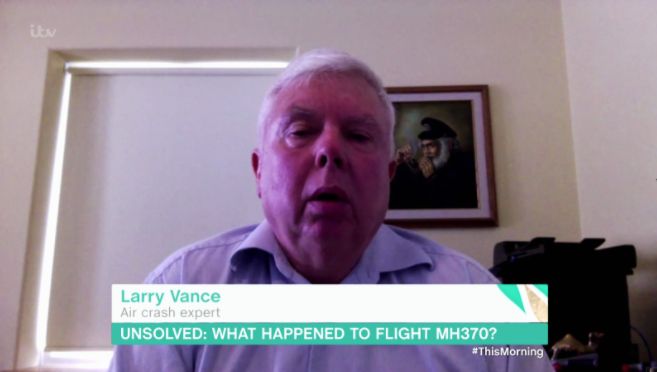As the mystery of what happened on board Malaysia Airlines flight MH370 continues, the finger of blame has been pointed once more at the actions of a rogue pilot.
The Beijing-bound flight with 239 souls on board, captained by Zaharie Shah, went missing an hour into its departure from Kuala Lumpur on 8 March 2014.
More than 20 items of debris suspected or confirmed to be from the plane have washed ashore on coastlines throughout the Indian Ocean since then.

But a deep-sea sonar search for the main underwater wreckage has yielded nothing.
Crash expert Larry Vance met with investigative journalist Mark Williams-Thomas to discuss the fate of the missing airliner on This Morning.
Vance is certain only one theory can account for what happened to the Boeing 777 – that it was brought down intentionally by a pilot.
He said: “This is a mass murder. There’s no other explanation for it. I believe that one of the pilots in the cockpit took the aircraft and landed it deliberately in the ocean so that it would remain basically in one piece and sink to the bottom, and never be seen again.”
The first piece of wreckage found was a manually-operated part from the plane wing, with Williams-Thomas remarking: “What’s crucial about this piece of wreckage is that it was found in the extended position which could only have been done by the pilot to land the plane.”

Retired airline pilot Ian Marshall was then asked if it would be possible for a plane of that size, and with that many passengers on board to hit the water without breaking up.
“The impact would be survivable,” he admitted.
Speaking in July, Vance told Australia’s 60 Minutes program: “Somebody was flying the airplane into the water.”
Vance’s comments are believed to have highlighted to search crews that if the plane was piloted until it hit the water (and thus contrary to the hypothesis it was not under human control when it crashed), it could have landed outside of the search area.

Vance added: “Everybody should then have concluded in my opinion that this was a human engineered event, there’s no other explanation.”
While the theory that Shah committed suicide and killed everyone else on board is a common one, it is at odds with that which suggests the crash was an act of heroism, rather than hijacking.
In an online thesis, Australian aviation enthusiast Michael Gilbert speculates Shah (if it was indeed him at the controls at the time) deliberately steered the plane – which had suffered an on board fire - off course to avoid a densely populated city, thus saving lives.
Based on the research of maintenance records and previous accidents, Gilbert surmises a windshield heater fire could have triggered the plane’s turn off course in an attempt to divert to an airport in Penang, with evidence of an oxygen leak in the cockpit causing the blaze to intensify quickly.
Faulty windshield heaters have previously caused fires forcing aircraft to divert to nearby airports.
What’s more, Gilbert explains: “A windshield heater fire can explain both the loss of the transponder signal and the interruption to the satellite communications link.”
The subsequent failure of the windshield would have extinguished the fire but also caused a rapid depressurisation.
Gilbert adds: “Within 20-25 minutes of the depressurisation event, 5-10 minutes before reaching Penang, almost everybody on board would have been dead.”
But Gilbert believes one of the pilots survived the fire and depressurisation event because they were wearing breathing apparatus, or possibly because they were outside the cockpit retrieving an extra fire extinguisher when the windshield failed.
Gilbert writes: “On approaching Penang the surviving pilot would have come to the realisation that he had no means of communication; radio communication panel keypads, microphones and headsets would have been burned or melted by the fire.
“The pilot would have also realised that there was no reasonable chance of manually flying the airplane; he had no instruments, it was night, there was no moon, he could only occupy the cockpit for short periods of time and oxygen supplies were dwindling. Any attempt to take manual control of the airplane would almost invariably end with loss of control and there would be no guarantee that he could re-engage the autopilot if he disengaged it.
Gilbert points out that just off the starboard wing was Penang, with its population of 1.65million people and that immediately ahead lay the Strait of Malacca, the world’s second busiest shipping lane.
“Given the situation I believe that the pilot then elected to do what many pilots in stricken airplanes have done in the past; steer it clear of populated areas.”
According to Gilbert’s theory, the surviving pilot will have been exposed to -30C temperatures for over an hour and would have been suffering from hypothermia, when he decided to simply point the airplane in the safest possible direction, before succumbing to hypoxia himself.
Gilbert believes MH370 eventually ran out of fuel and came down around 200km north of the search area highlighted by the Australian Transport Safety Bureau (ATSB).
In January the deep-sea search for the missing airliner officially ended, leaving its final resting place one of the world’s greatest aviation mysteries.
“Despite every effort using the best science available ... the search has not been able to locate the aircraft,” Malaysian, Australian and Chinese authorities said in a statement.
“The decision to suspend the underwater search has not been taken lightly nor without sadness.”
